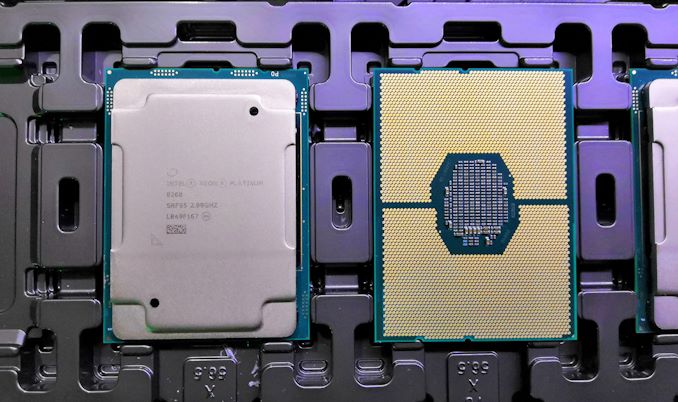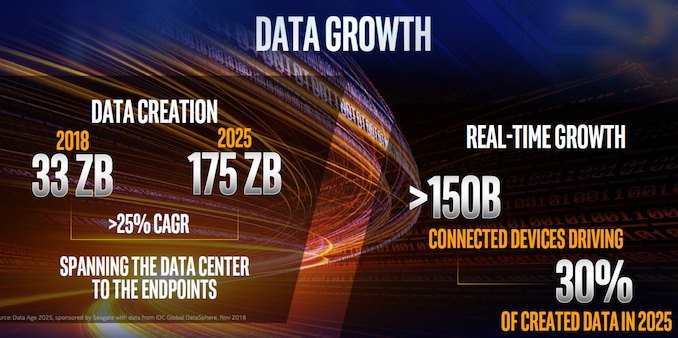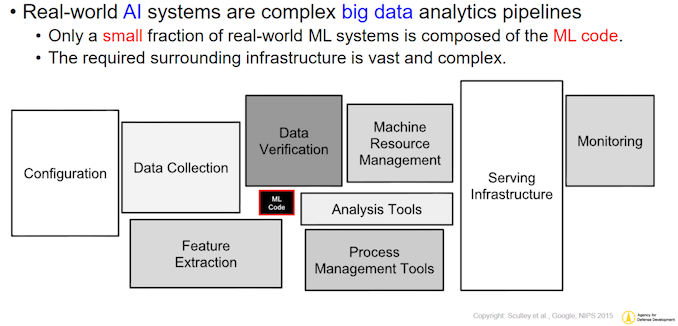Intel's Xeon Cascade Lake vs. NVIDIA Turing: An Analysis in AI
by Johan De Gelas on July 29, 2019 8:30 AM EST
It seems like the new motto for Silicon Valley for the last few years has been “Data is the new oil,” and for good reason. The number of companies employing machine learning-based AI technologies has exploded, and even a few years after all of this has kicked off in earnest, those numbers continue to grow. This form of AI is no longer just an academic thesis or curious research project, but instead machine learning has become an important part of the enterprise market, and the impact on enterprise hardware – both purchasing and development – would be difficult to overstate. This is the era of AI.
At first sight, the hardware choices for these kinds of applications seem simple: Intel Xeon CPUs for storing and preprocessing data, NVIDIA GPUs for (almost) everything AI. And indeed, this has largely been case for the last few years now. However, NVIDIA’s competitors have not been standing idly by the entire time – and that especially goes for Intel, whose enterprise market share all of this ultimately threatens. With everything from dedicated low-power inference processors to purpose-optimized Xeons, Intel is taking aim at every level of the AI market. The net result is that between all of these competitors, we’re seeing AI tackled from many different directions, and the hardware battle for AI era is insanely interesting in our humble opinion.
Today we’re taking a look at what’s perhaps the heart of Intel’s hardware in the AI space, Intel’s second-generation Xeon Scalable processors, better known as "Cascade Lake". Introduced a bit earlier this year, these new processors are still based on the same core Skylake architecture as the first-generation products, but incorporate a number of new instructions to speed up AI performance.
And as far as new technology goes, this is certainly the most interesting aspect of Cascade Lake. While we could talk about the three to six percent general CPU performance improvement, the 56 cores of Intel’s most expensive processor ever, and the "world record benchmarks," these small improvements are close to irrelevant for the near and mid-term future of the IT world. Just look at the very first slide of the Intel press & analyst briefing.
Internet of things, data engineering, and AI. That is where a large part of the growth, the innovation, and the future of IT will be. And this is where Intel wants to be.
Right now, NVIDIA has a virtual monopoly on the “sexiest” part of this market, which is deep learning and “massively parallel HPC” software. Thanks to a confluence of factors on the hardware and software sides, most of this software is run on NVIDIA GPUs and clusters. So to the general public, it looks likes NVIDIA owns the “AI market”, a picture that is not inaccurate, but also not complete. There’s a lot more to the AI market than just neural network inferencing, and in particular, everything that has to happen to feed the AI model with data gets very little attention. As a result, it’s neural networks and Terminator robots that get all the headlines, even though they’re just part of the of the picture. In reality, the processing web for AI applications is much more like the picture below.
In short, actual machine learning code execution is only a very small part of the software tools necessary to build and AI Application.
Before you can even start, you have to ingest data, decompress, filter, reorder, map, and shuffle it around. Once everything is sorted and shuffled, you have to aggregate the data. As ML algorithms need large amounts of data to produce good predictions, that can be very processing memory intensive. Why? Let us delve a little deeper.












56 Comments
View All Comments
C-4 - Monday, July 29, 2019 - link
It's interesting that optimizations did so much for the Intel processors (but relatively less for the AMD ones). Who made these optimizations? How much time was devoted to doing this? How close are the algorithms to being "fully optimized" for the AMD and nVidia chips?quorm - Monday, July 29, 2019 - link
I believe these optimizations largely take advantage of AVX512, and are therefore intel specific, as amd processors do not incorporate this feature.RSAUser - Monday, July 29, 2019 - link
As quorm said, I'd assume it's due to AVX512 optimizations, the next generation of AMD Epyc CPU's should support it, and I am hoping closer to 3GHz clock speeds on the 64 core chips, since it seems the new ceiling is around the 4GHz mark for 16 all-core.It will be an interesting Q3/Q4 for Intel in the server market this year.
SarahKerrigan - Monday, July 29, 2019 - link
Next generation? You mean Rome? Zen2 doesn't have any AVX512.HStewart - Tuesday, July 30, 2019 - link
I believe AMD AVX 2 is dual-128 bit instead of 256bit - so AVX 512 would probably be quad 128bit .jospoortvliet - Tuesday, July 30, 2019 - link
That’s not really how it works, in the sense that you explicitly need to support the new instructions... and amd doesn’t (plan to, as far as we know).Qasar - Tuesday, July 30, 2019 - link
from wikipedia :" AVX2 is now fully supported, with an increase in execution unit width from 128-bit to 256-bit. "
" AMD has increased the execution unit width from 128-bit to 256-bit, allowing for single-cycle AVX2 calculations, rather than cracking the calculation into two instructions and two cycles."
which is from here : https://www.anandtech.com/show/14525/amd-zen-2-mic...
looks like AVX2 is single 256 bit :-)
name99 - Monday, July 29, 2019 - link
Regarding the limits of large batches: while this is true in principle, the maximum size of those batches can be very large, is hard to predict (at leas right now) and there is on-going work to increase the sizes, This link describes some of the issue and what’s known:http://ai.googleblog.com/2019/03/measuring-limits-...
I think Intel would be foolish to pin many hopes on the assumption that batch scaling will soon end the superior performance of GPUs and even more specialized hardware...
brunohassuna - Monday, July 29, 2019 - link
Some information about energy consumption would very useful in comparisons like thatozzuneoj86 - Monday, July 29, 2019 - link
My first thought when clicking this article was how much more visibly-complex CPUs have gotten in the past ~35 years.Compare the bottom of that Xeon to the bottom of a CLCC package 286:
https://en.wikipedia.org/wiki/Intel_80286#/media/F...
And that doesn't even touch the difference internally... 134,000 transistors to 8 million and from 16Mhz to 4,000Mhz. The mind boggles.